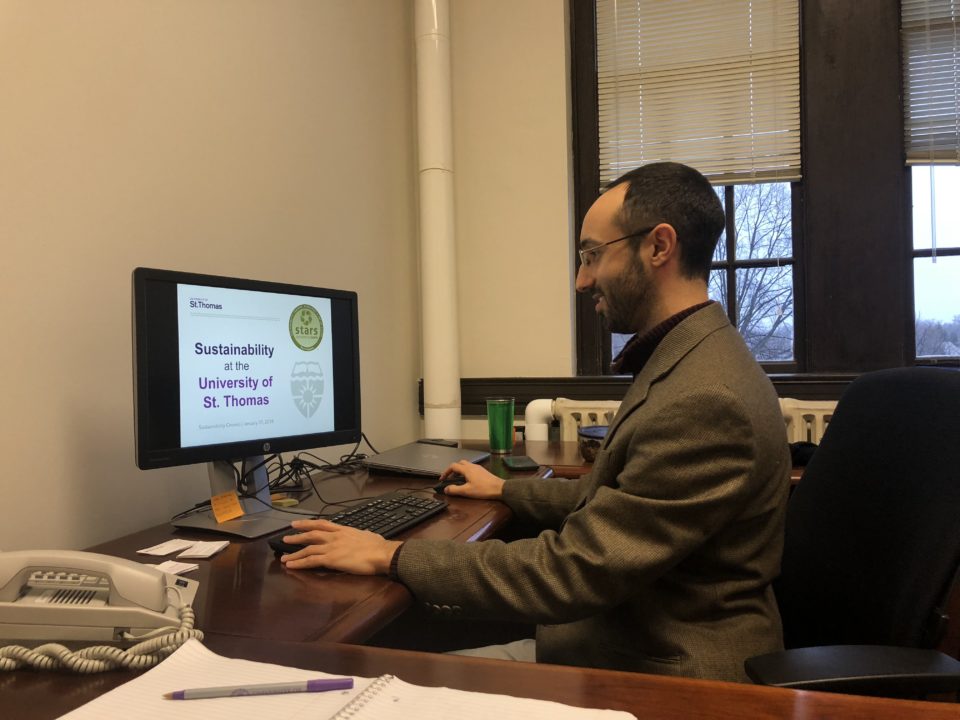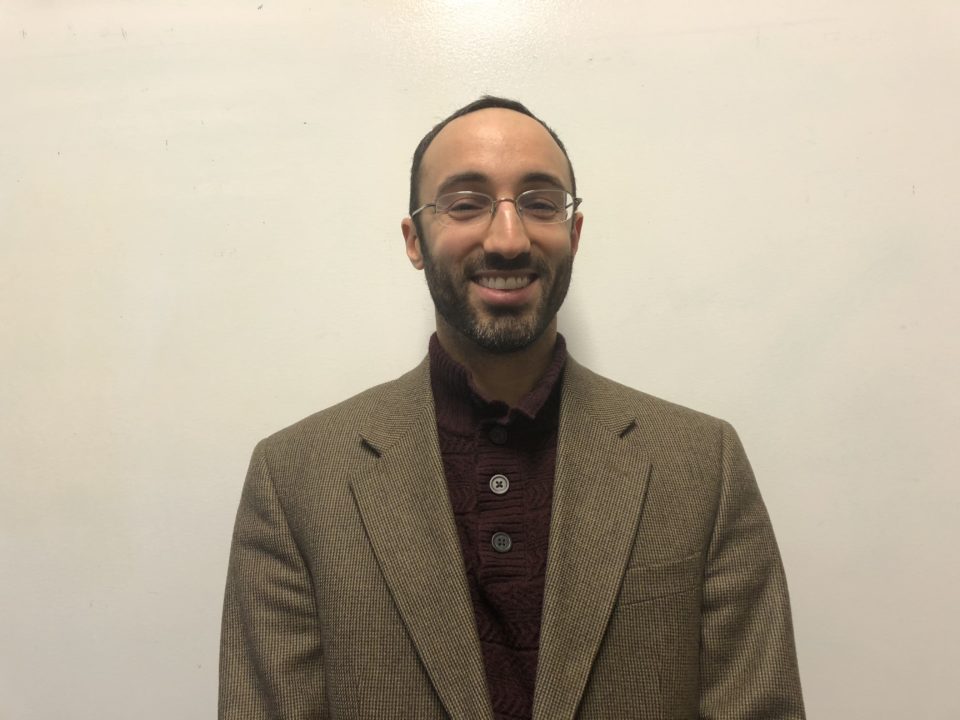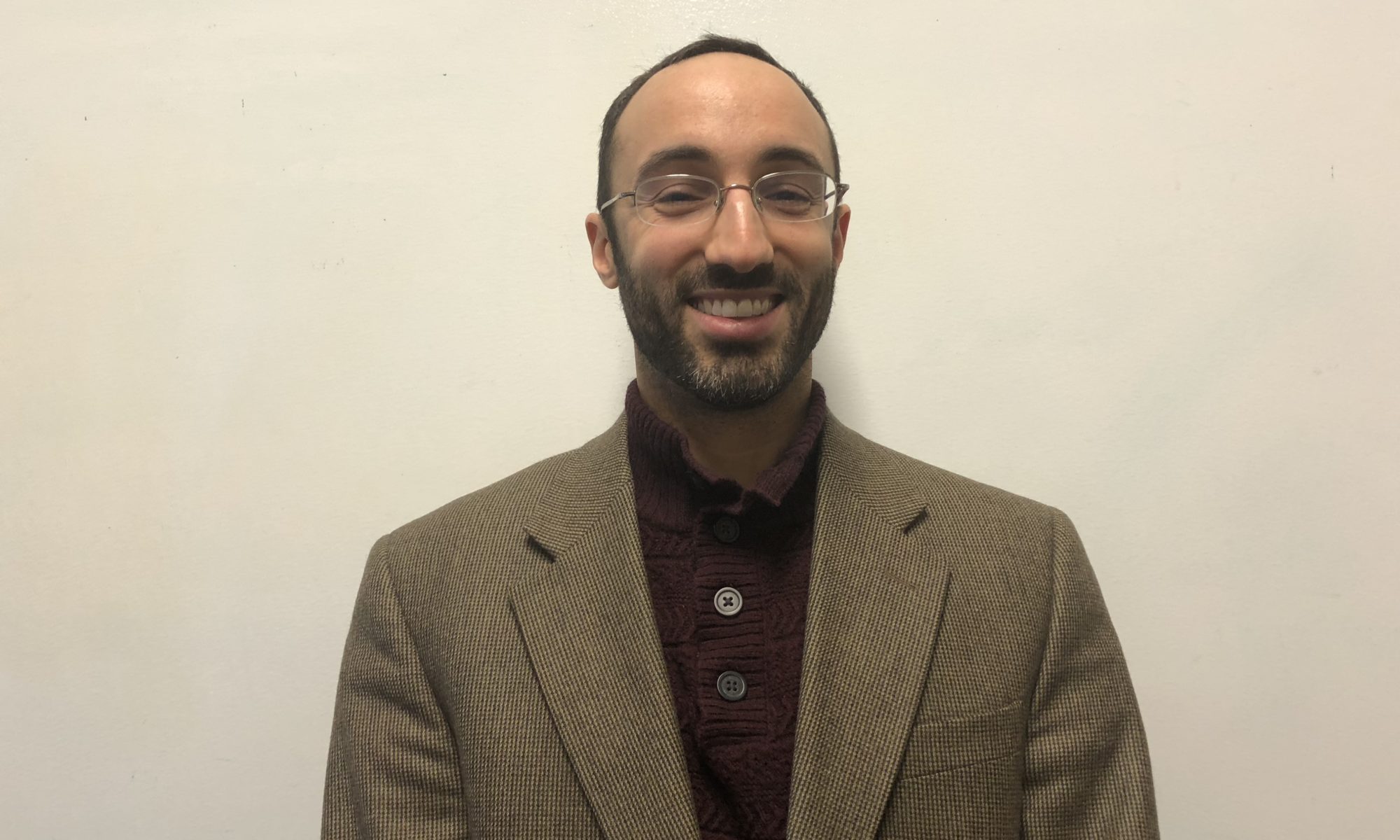Amir Nadav was hired last December as St. Thomas’ first assistant director of campus sustainability. Nadav will further campus efforts to be carbon neutral by 2035.

Elise Amel, the faculty director of the Office of Sustainability Initiatives, says that Nadav’s new position is something that the university has wanted to create for a while. Sustainability work has been done across campus in various departments, and now there is a full-time employee who can be aware of what is going on, Amel said.
“I think it’s really important to have somebody who has the bird’s eye view of campus, not only so we have a better sense of what is going on around campus but also to bring people together strategically,” Amel said.
Amel is excited to have Nadav join the Office of Sustainability Initiatives’ staff.
“He is very easy to work with. He’s an excellent listener. He’s super bright, knowledgeable and enthusiastic,” Amel said. “It’s easy to become energized sitting with him in a meeting talking about things.”
Before his position at St. Thomas, Nadav was the interim executive director of the Neighborhood Energy Connection in St. Paul, where he finalized its merger with the Center for Energy and Environment and the launch of Hourcar as an independent nonprofit organization.
He also serves on the board of directors of the Center for Energy and Environment, which works “to promote energy efficiency to strengthen the economy while improving the environment,” according to its website.

He has also taught the senior capstone class for the sustainability minor at the University of Minnesota for four years. Before that, he was a program manager at the Great Plains Institute for five years, where he worked with nonprofits and governments on a variety of energy efficiency and sustainability programs.
Nadav graduated from Cornell University in 2006 with a bachelor’s degree. After that, he received his master’s degree from Yale University in environmental management, with a focus on energy systems and urban sustainability.
At his home in Eagan, Minnesota, Nadav practices sustainability by composting his food waste. He uses the compost for his garden, where he grows herbs and vegetables every summer. He replaced his gas furnace with a heat pump and switched out his light bulbs to make his home more energy efficient. He also uses a low-flow showerhead and drives a hybrid.
“I think I had deep interest in these issues for a long time,” Nadav said.
When he was in high school, he started a petition to reduce bus idling. He realized that diesel emissions were not good for the environment or human health. He got involved in a campaign to raise awareness about the issue and health impacts of diesel emissions.
Within a few months, he was in the state Capitol lobbying for his petition. He helped pass a state law that prohibited school bus idling and initiated the relocation of air intake vents away from the diesel emissions.
“That’s when I realized I want to do more to support initiatives that protect human health and also protect the environment,” Nadav said.
Nadav’s first major task at St. Thomas is to complete a university-wide sustainability performance assessment through the Sustainability Tracking, Assessment and Rating System (STARS), an international sustainability rating system. Over 800 higher institutions have used it to measure their sustainability performance, according to its website. Nadav is currently gathering data for a comprehensive inventory to submit information to STARS’ online reporting tools.
Nadav’s goal is for the university to have a rating by this summer. The STARS results will give the university scores in several categories such as academics, operations, and engagement. He will compare St. Thomas’ rating to peer institutions across the country and develop a long-term sustainability plan for the university.
With this assessment, the university will receive public recognition for its sustainability efforts and potentially qualify for some national rankings.
“I hope that the university that can get more credit for the work that it has been doing for a long time,” Nadav said.
Some examples of that work include sustainability in dining services: composting at the Binz Refectory dining hall, switching hot beverage cups to biodegradable solution made from recycled materials and donating food waste to local farmers for agricultural use.
Meanwhile, St. Thomas facilities management has worked toward sustainable operating procedures and technology for the past 25 years, according to its website. The department made a lot of improvements to make buildings more efficient, which cut down on energy costs and use less energy, Nadav said.
The Office of Sustainability Initiatives also integrated sustainability into students’ curriculum through the Sustainable Communities Partnership, which connects students with cities to work on sustainability projects in order to gain real-world experience.
“It directly connects students to meaningful work in the community and lets them act as consultants,” Nadav said. “Sustainability is something that everybody can do.”
Samantha HoangLong can be reached at hoan1058@stthomas.edu

